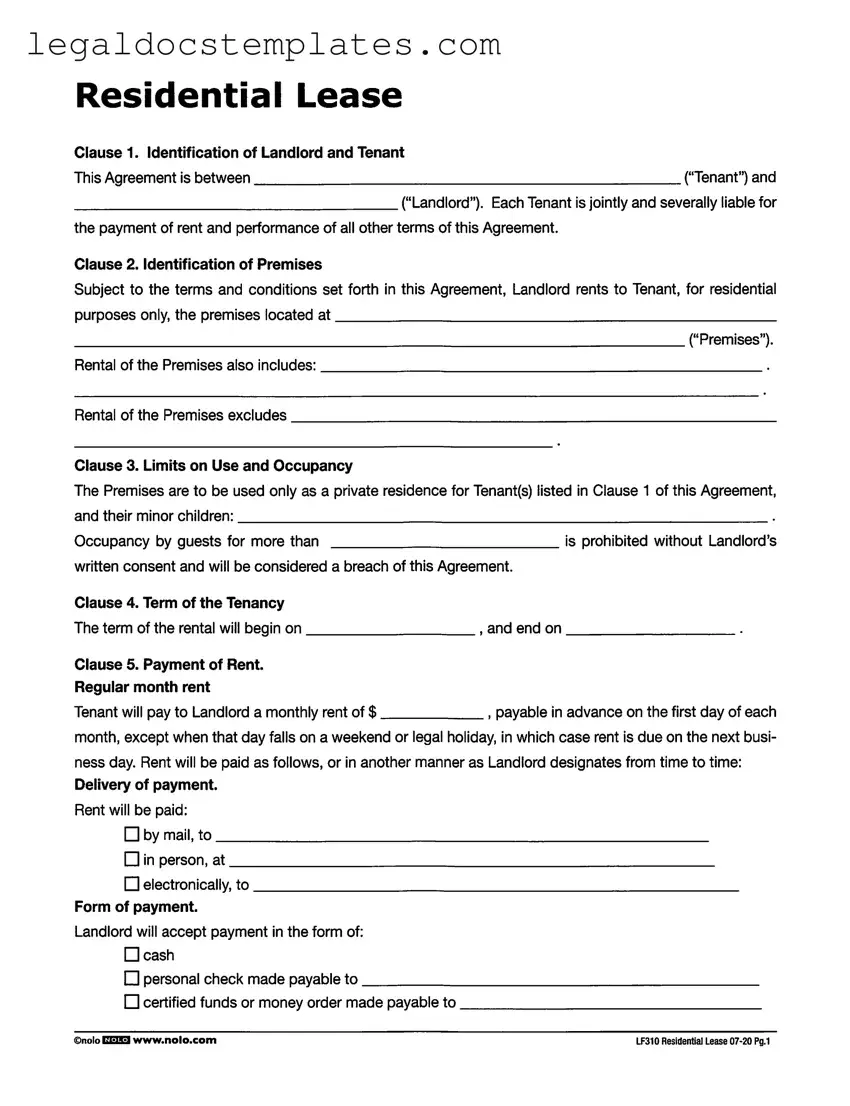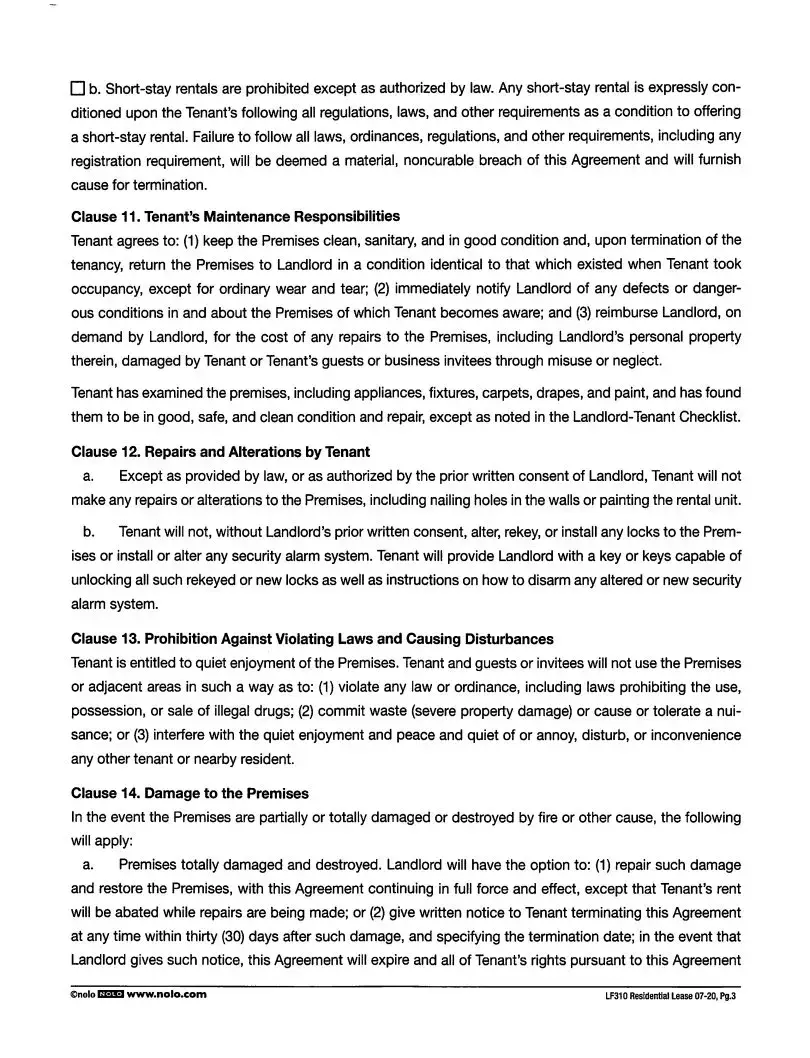The Residential Rental Agreement is a document closely akin to the LF310 Residential Lease form, focusing on creating a legal binding between a landlord and a tenant regarding the rental of a residential property. Like the LF310, it outlines the identification of both parties, the terms of the lease, payment of rent details, and the obligations regarding utilities, highlighting the roles and responsibilities of each party in maintaining the agreement, emphasizing clear communication and agreed-upon conditions for the residential lease.
An Apartment Lease Agreement shares similarities with the LF310 form by providing a framework for renting an apartment from a landlord. It covers the essential elements such as rent payment schedules, security deposits, and the terms of the tenancy, along with specifics related to apartment living such as rules about pets, parking, and use of common areas. This agreement ensures that both landlord and tenant are on the same page regarding the expectations and rules for the apartment rental.
The Commercial Lease Agreement, while designed for business properties rather than residential use, parallels the LF310 in its structure and intent. It sets forth the terms under which a commercial property is rented, including details on rent, duration of the lease, and upkeep responsibilities. Though focused on commercial tenants, it similarly seeks to clearly define the relationship between landlord and tenant, outlining the liabilities and responsibilities of each party to prevent future disputes.
A Sublease Agreement, which allows a tenant to rent out their leased premises to another person, known as a subtenant, bears resemblance to the LF310 in terms of establishing a temporary tenancy within the confines of an existing lease. It will often reference the original lease and specify how it fits within its terms, including rent, security deposits, and lease duration, ensuring that the subtenant abides by the conditions agreed upon in the original lease.
The Room Rental (Roommate) Agreement is designed for individuals who wish to rent shared living spaces. This document is similar to the LF310 in that it helps to structure the living arrangement by laying out terms for rent, utility payments, and shared responsibilities, aiming to minimize conflicts among residents by setting clear expectations for behavior and financial obligations.
A Short-Term (Vacation) Rental Agreement is tailored for properties being rented out on a temporary basis, such as vacation homes. This type of agreement shares similarities with the LF310 Residential Lease in defining the terms of stay, payment, and rules of the rental. However, it specifically caters to the short-term nature of the rental, often including provisions for cleaning fees, check-in/check-out instructions, and maximum occupancy limits, focusing on the details relevant to a brief tenancy period.
The Lease Renewal Agreement, which is used when extending the term of an existing lease, correlates with the principles found in the LF310 by reaffirming the conditions under which a tenant will continue to occupy the rented property. This agreement typically revisits terms such as rent amount, duration of the new lease term, and any updates to the original agreement, ensuring continuity in the landlord-tenant relationship.
An Early Lease Termination Agreement allows a tenant to be released from their obligations under a lease before the end date specified in the original contract. This document, while centering on ending a lease, shares the essence of the LF310 by detailing the conditions under which the lease is terminated, including any financial terms and notices required, ensuring a structured and agreed-upon conclusion to the lease.
The Lease Amendment Agreement is used when a landlord and tenant agree to change certain terms of an existing lease. Similar to the LF310, this agreement’s purpose is to adjust the lease conditions while maintaining the integrity of the original agreement. Whether it's a change in rent amount, pet policy, or anything else, this document allows for a formal recognition of the new terms without the need to draft a completely new lease agreement.










